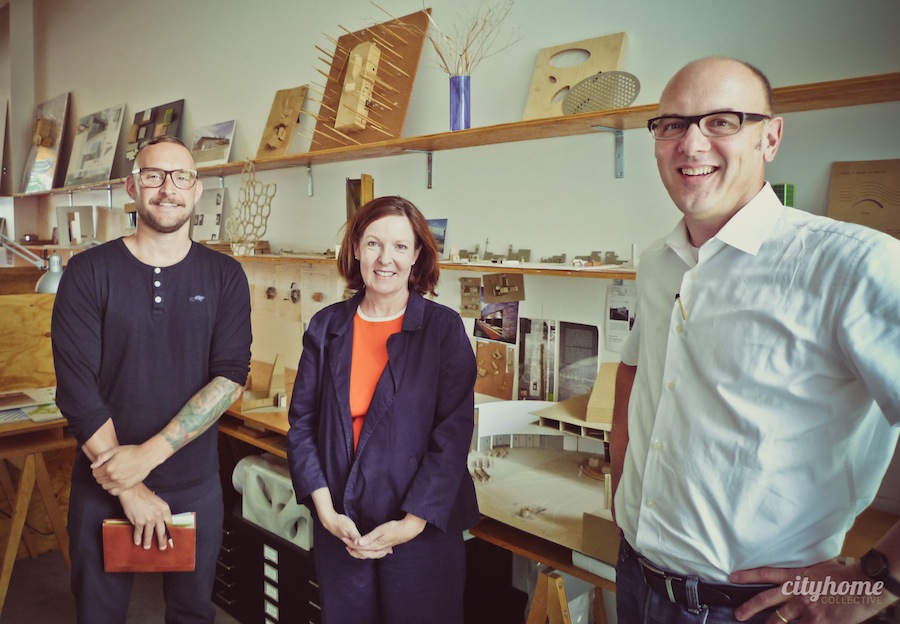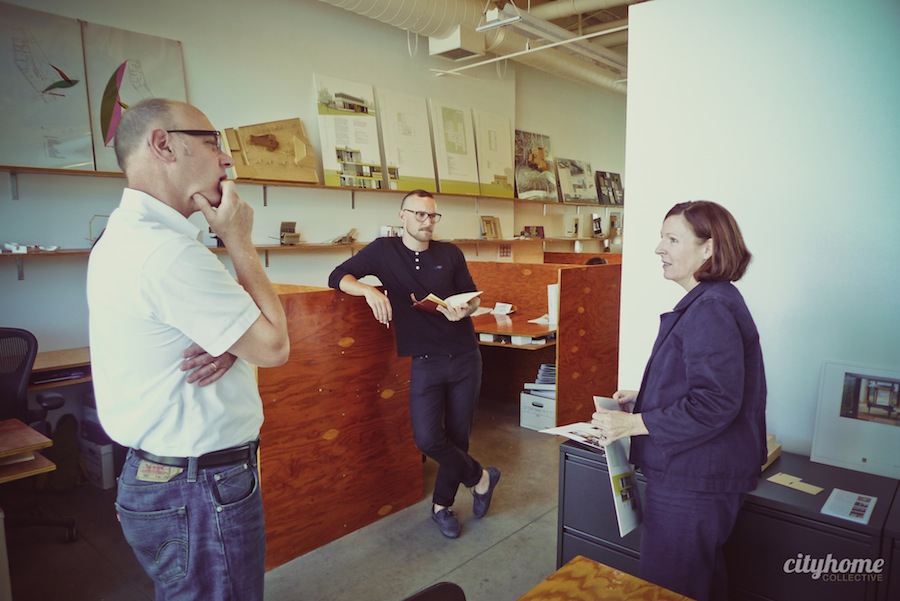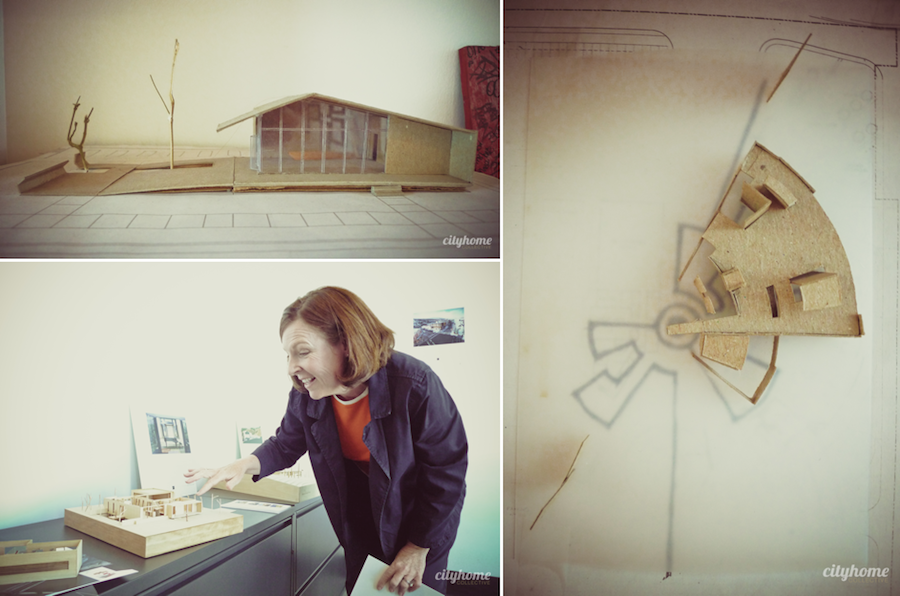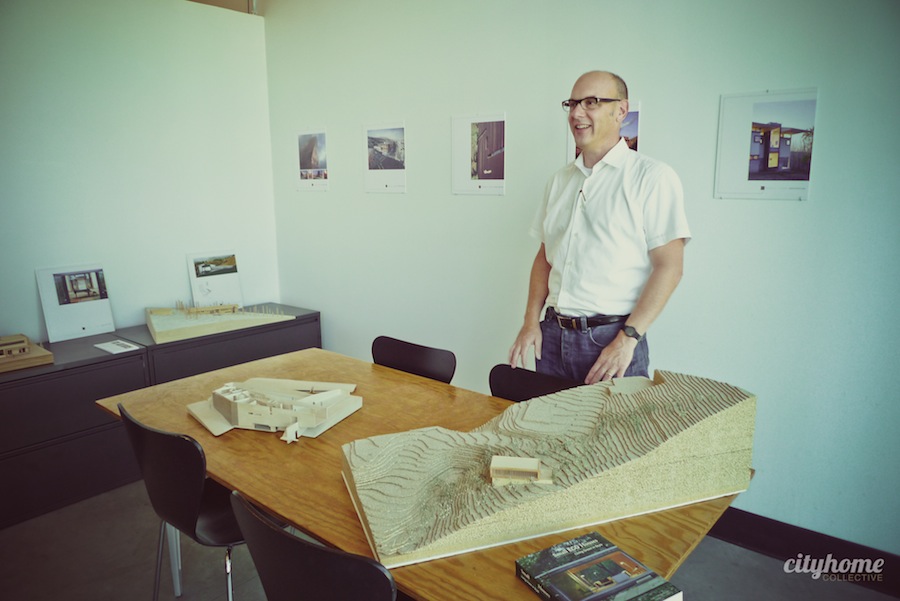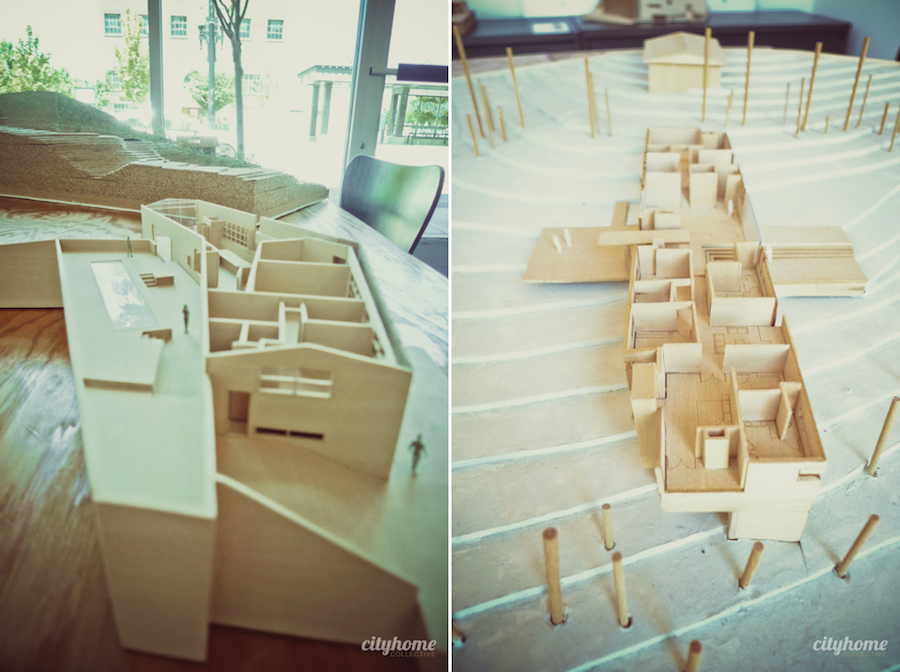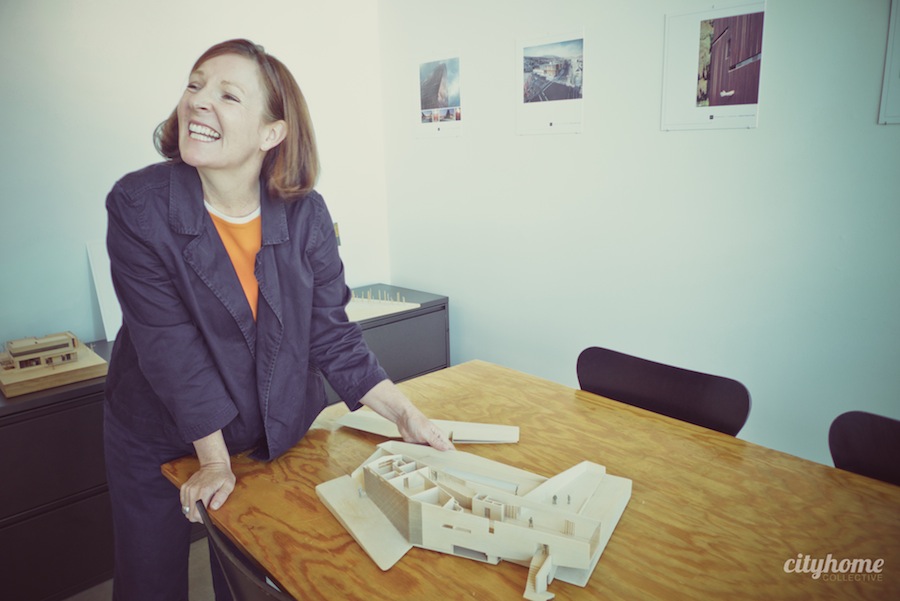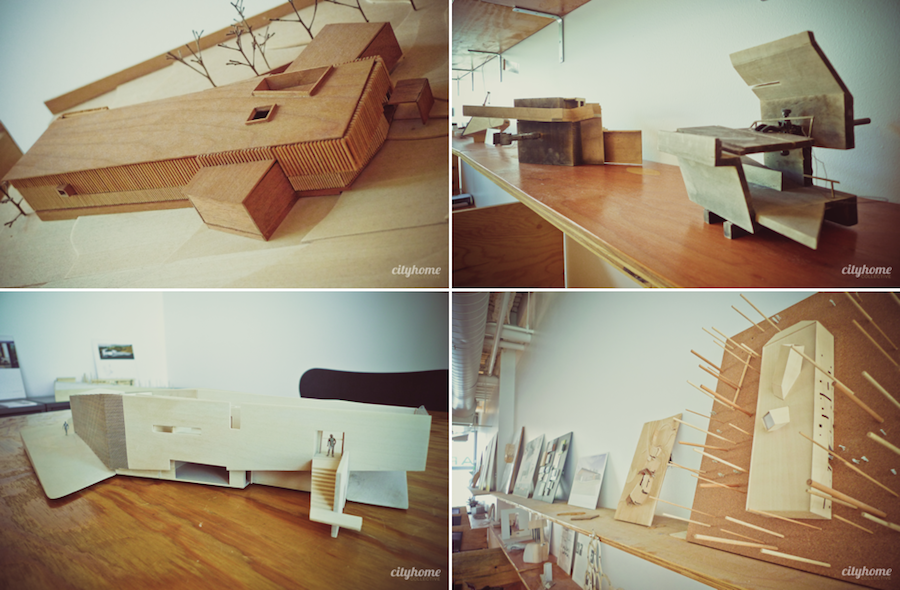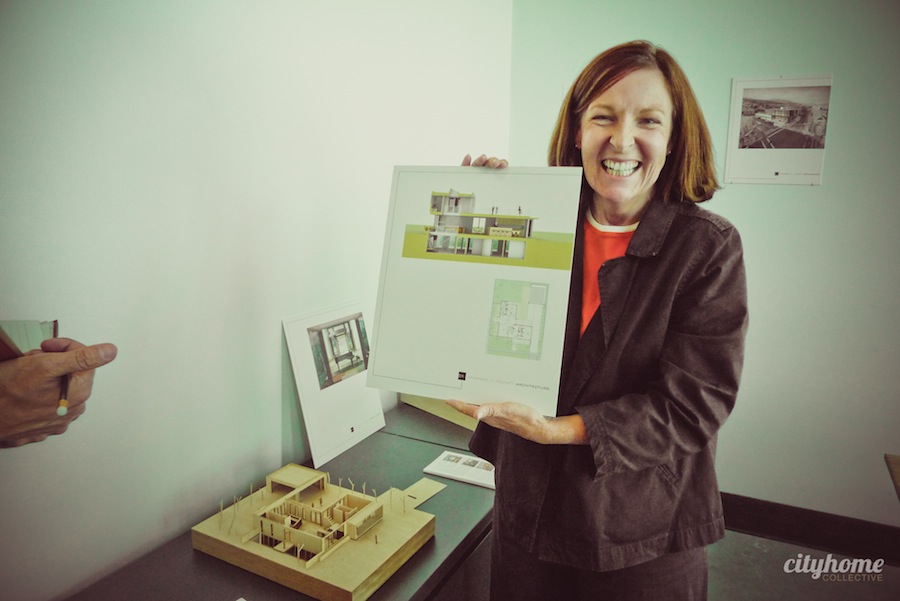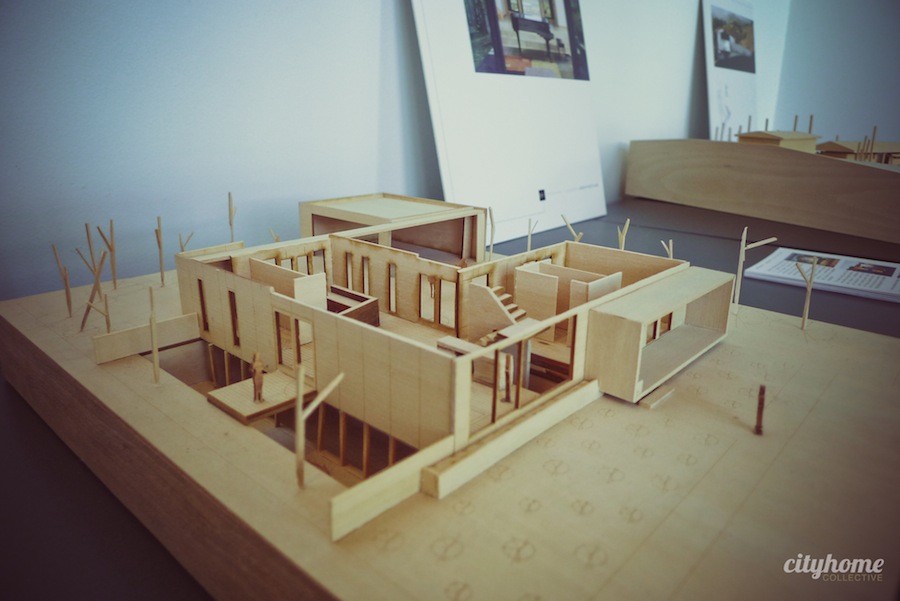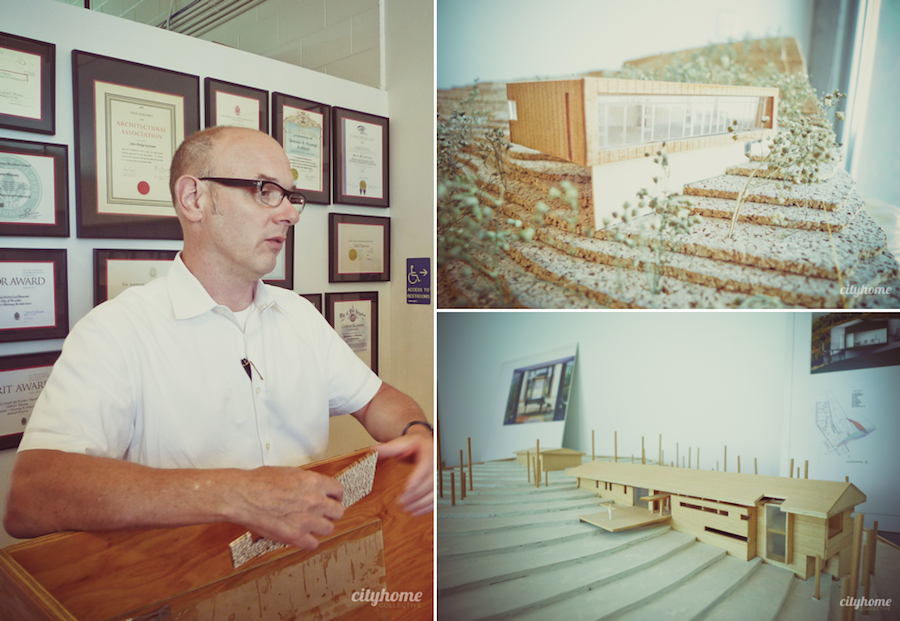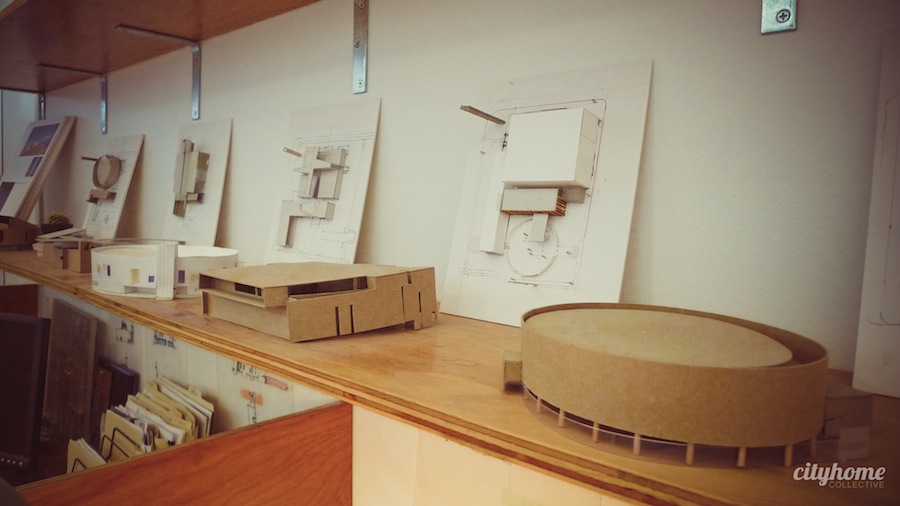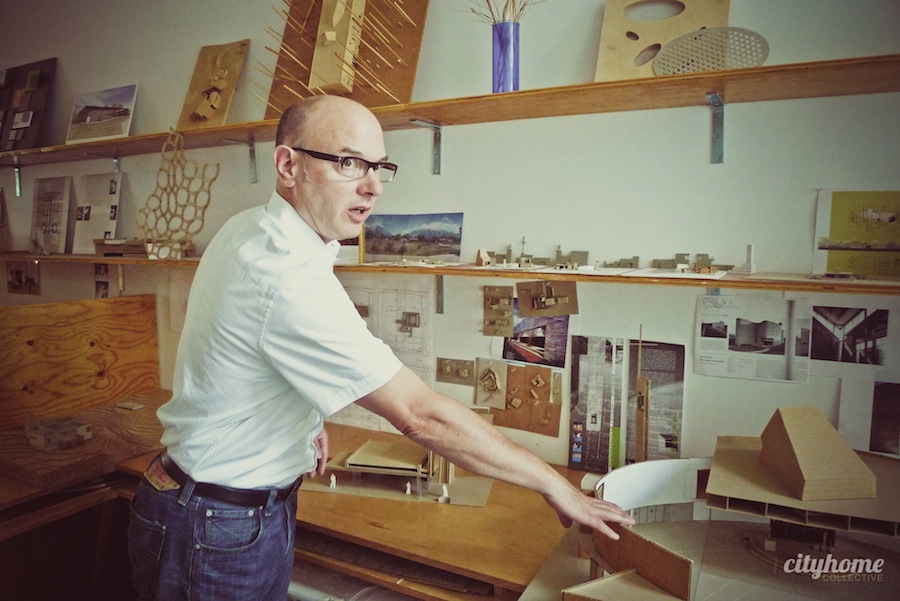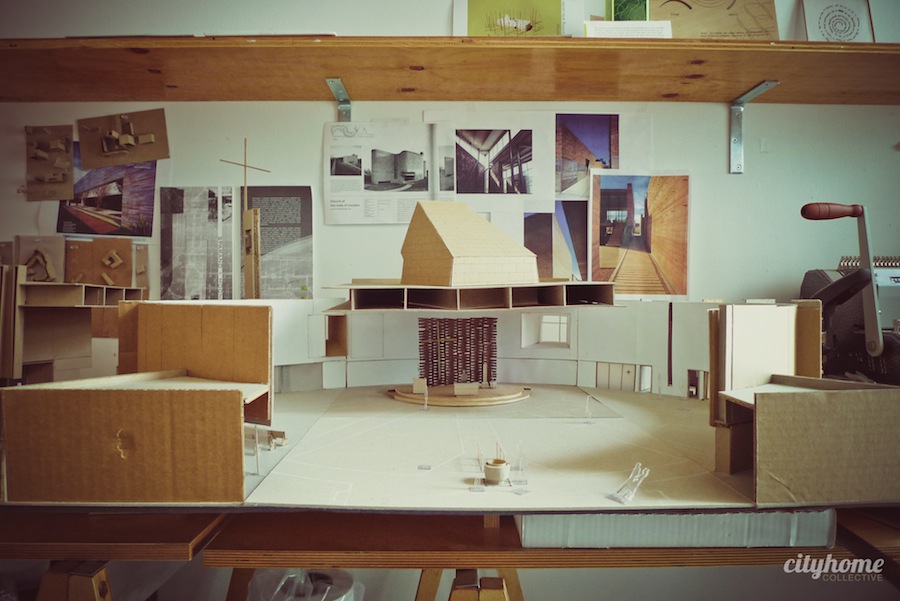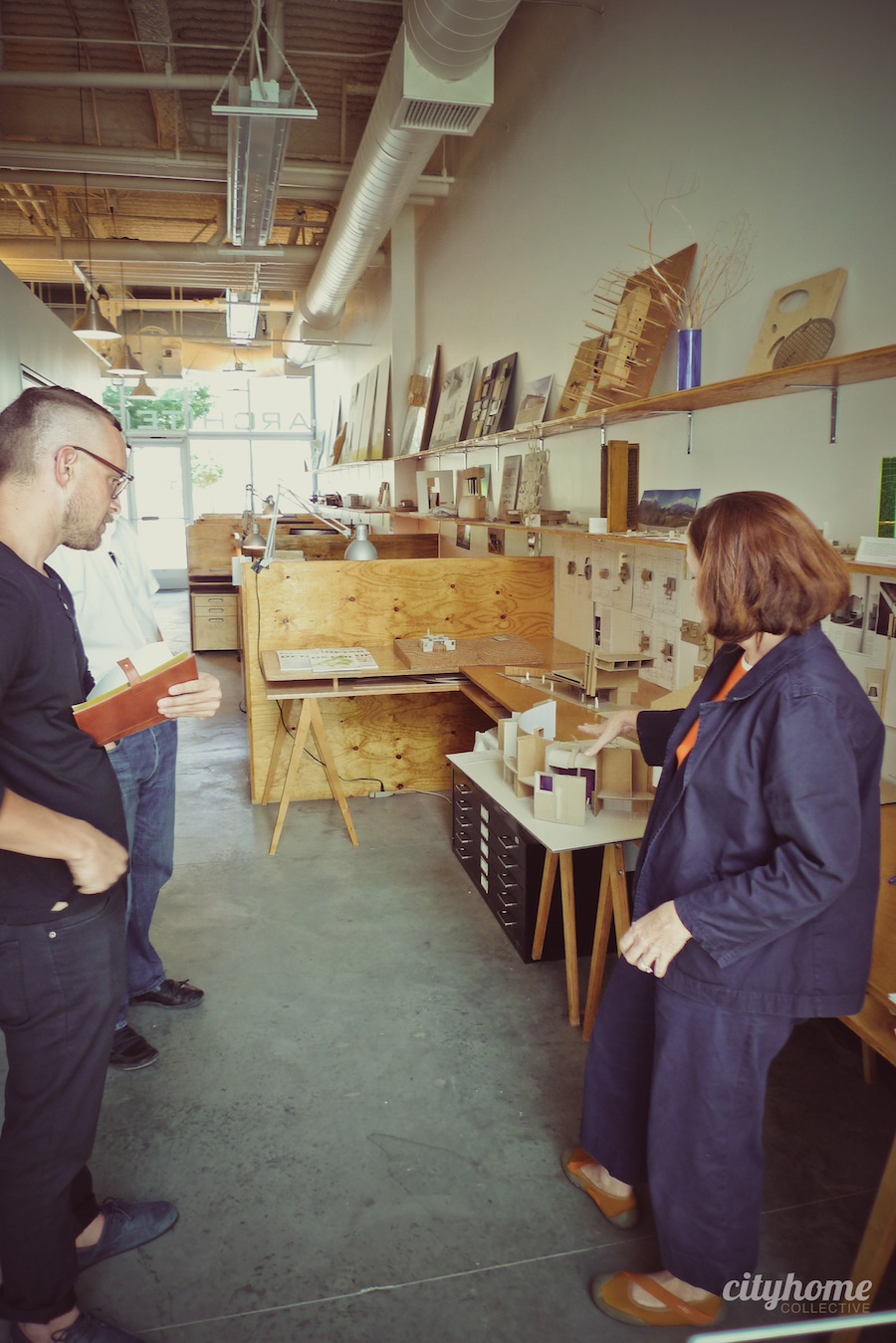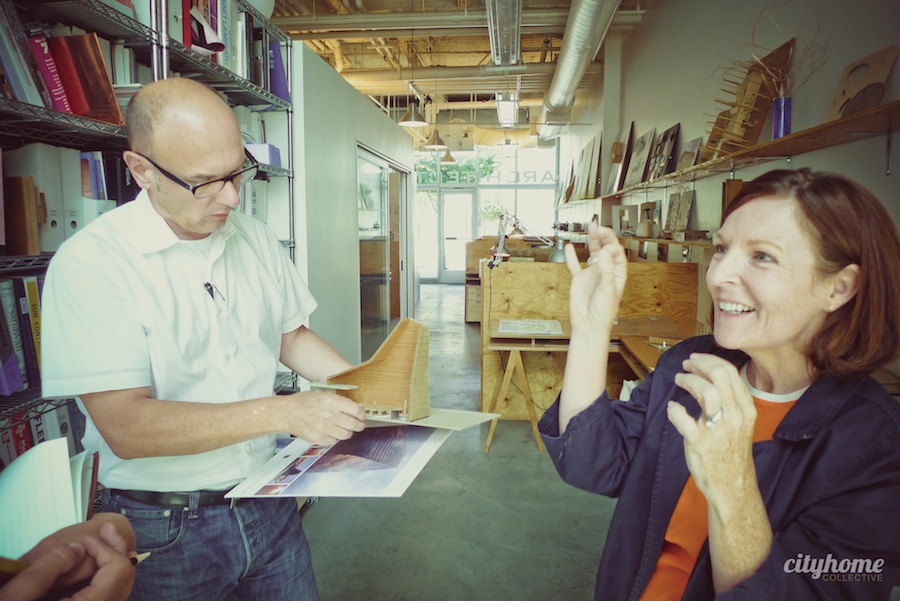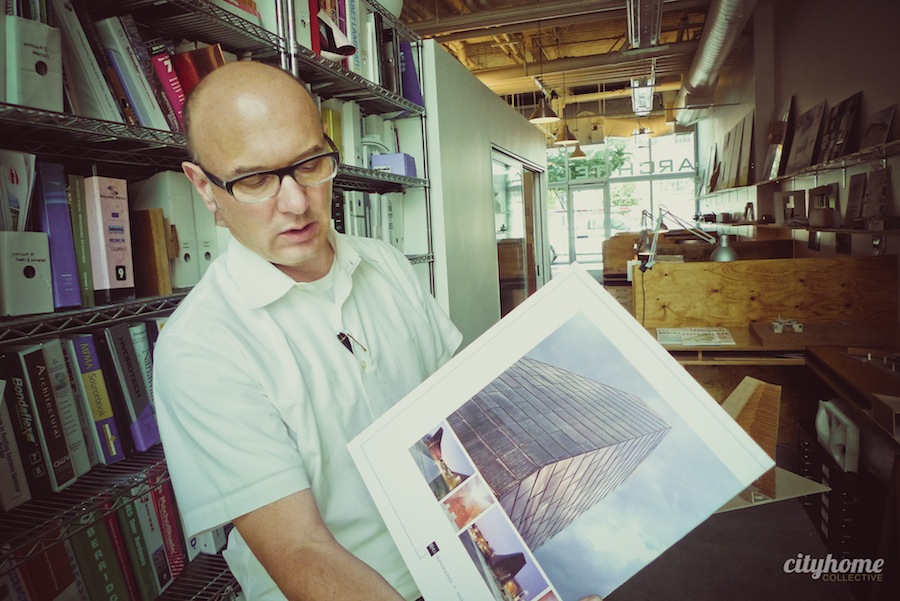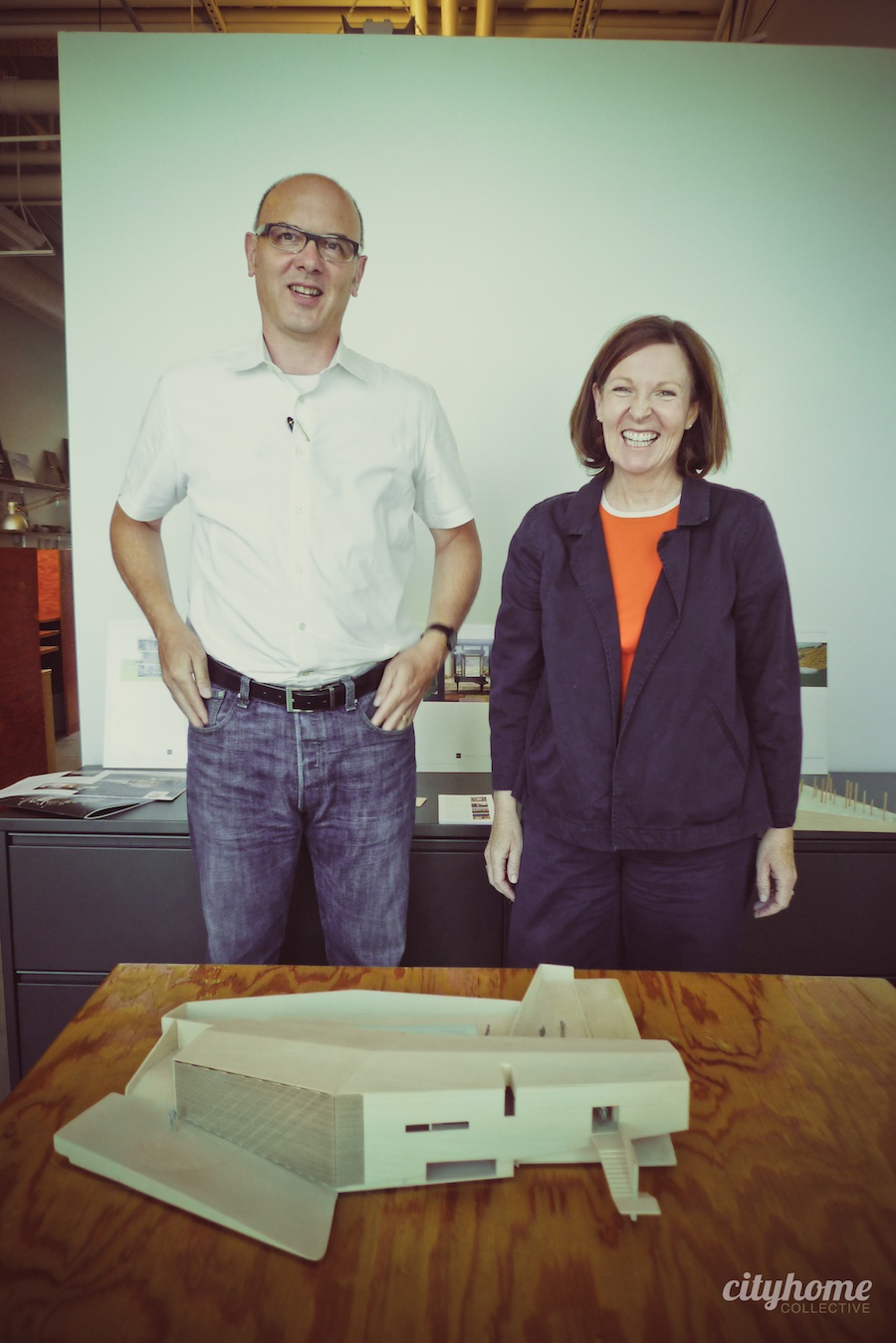John and Anne make models; that's what it comes down to. A surprising bottom line, perhaps, given that their homes have been featured in Dwell, Surface, Hinge [just a wee taste of the numerous publications that have featured them, both in the US and abroad], and a new book, Small Eco Houses. We say again, though -- John and Anne make models.
It's telling, really; it speaks highly to the level of client commitment they practice. In an industry where 'model' refers increasingly to something created in CAD, they're sticking to their [very talented] guns. Past projects were paid their due attention; when the duo noticed that clientele responded to and interacted more with a tangible project representation than a detailed computer rendering, they took note. They stuck with models.
We COLLECTIVELY speak often to asking the right questions -- of focusing on what's really needed to find your space and love where you live. Anne and John are doing the same, and it's happening at its most base level...they're starting with the mere idea of the structure. No wonder they're so successful. Ask the questions, build the models, and jump start the interactive dialogue between client and space. The formula works.
In fact, S|MA is actually putting several brilliant ideas into practice [all of which we happen to COLLECTIVELY execute, as well]. For one, they're classless. That is to say, no project, big or small, is beyond their scope. No-budgets, big-budgets, eco-friendlies, standard-builds -- each and every project will see the time and effort necessary to perfect its bones. For another, they're taking a non-linear approach to the industry. Their project 'research' is holistic, and inspiration is found in sources of all color and cast. All told, S|MA has created more models than we have sold houses [many hundreds, that is], including those for churches, museums, schools, community centers, arts centers, homes, etc. As SLC's own [score], we had the opportunity to ask these clever, creative folks a few questions...
You love your job -- that's clear. You love making models -- also clear. Is there one project, in particular, that you would have loved to see constructed, but never was? How hard is that? Unfortunately, it happens all the time. It's a part of architecture, so we're used to it. With each design, we try to move a set of ideas forward, and some of them end up being realized in another project later on. Right now, we're involved in an off-the-grid residential project in Green River that's on hold -- we'd love to see that completed.
Do you have ideas for anything that are on hold, just waiting for the right open-minded client? Or do you always wait for the client to approach you before you let your brain run wild? We typically wait until a client asks us to design something, but we're always thinking of new possibilities. The program, site, and budget have such a profound impact on a project that entering into the specifics of the design process before those parameters are defined is futile. Having said that, we've always wanted to design a house made of shipping containers and we like using recycled and reclaimed materials; we love expressing a client's ideas and lifestyle with the materials and details of architecture. We've also been wanting to design a house or housing project using customized, pre-fab technology, i.e. a custom house using pre-fabricated parts.
We discussed what you love about SLC and Utah, and you worded it beautifully. You're an international firm...why are we lucky enough to have you call this 'home'? Anne is from Salt Lake, and it's home now for John, as well. It's a great place to raise a family. Anne’s parents are here, so it's wonderful for the children to grow up with their grandparents. We love the landscape, the history, and the mythology of this part of the American West -- we find the stories and people of this place inspiring in our design work. The light here is wonderful, and the seasons are very grounding. When surrounded by nature, I find inspiration [Anne]. Architecturally, the region is very young. We find this to be what makes it the perfect place to practice architecture and to be involved in creative endeavors right here and right now [John]. In the broadest possible sense, we hope to be contributing to the formation, refinement, and clarification of a design culture of the American West.
